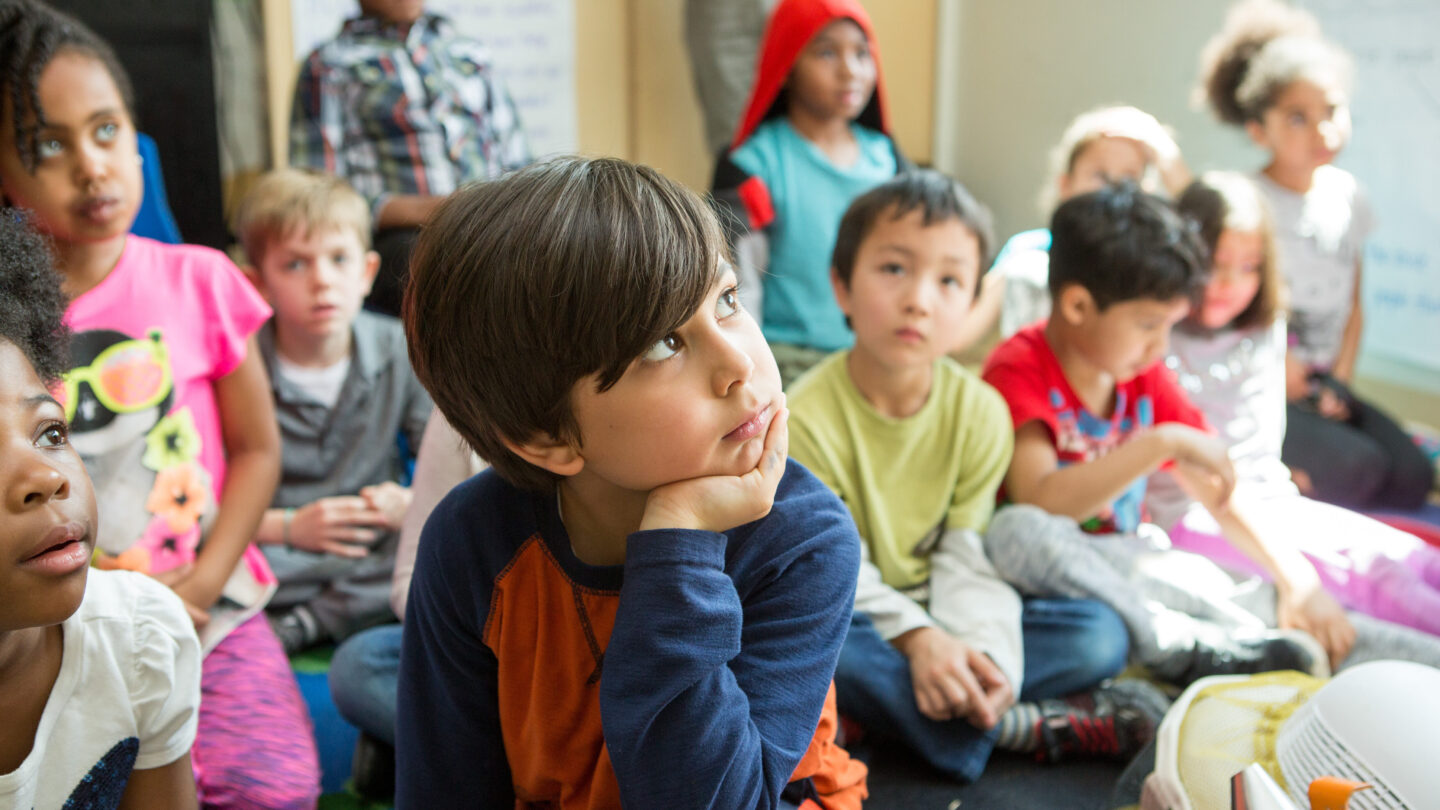A new school year is underway, with students in most states back in classrooms. There’s a lot at stake in the coming months: a presidential election, the winding down of federal pandemic-relief funding, and, of course, the educational outcomes of almost 50 million public schoolchildren in the United States.
Education-policy challenges are often perennial. Pandemic aside, rarely is there an issue we haven’t grappled with before: teacher shortages, strained budgets, low test scores, school quality, student mental health, homelessness and other challenges take their turn in the spotlight. What issues will emerge as this year’s priorities, and what will we be watching for at FutureEd? Here are some at the top of our list.
Chronic absenteeism
Perhaps the greatest remaining scourge of the pandemic years, chronic absenteeism remains stubbornly higher than pre-pandemic rates, which were already troublingly high in many places. One estimate suggests that 19 percent of students were chronically absent in the 2023-24 school year, with almost one out of every five students missing more than 10 percent of the school year. We expect to see districts continue the hard work of building relationships with students and families, identifying ways to overcome the obstacles that keep students out of school, and investing in more robust academic and career-focused opportunities to keep students wanting to come back.
We’ll be following Rhode Island’s ambitious attendance campaign and looking at other states and school districts that are finding success with their approaches to getting students back to school. We’re also again tracking state releases of official 2023-24 chronic absenteeism data; it’s more difficult to solve for a problem when we don’t know just how serious the problem is.
Life after ESSER
On September 30, 2024, the once-in-a-generation pandemic relief funds expire. We know there will be many conversations about the fiscal cliff the ending of ESSER funding represents and tremendous amounts of speculation on districts’ responses to a more resource-constrained time. Keep an eye out for our ESSER Lookback in October. It’s a comprehensive take on the ESSER enterprise, including an analysis of how and where the federal Covid-relief money has been spent.
In the fall and beyond, we’ll be watching where districts make tough decisions to redeploy federal Title I dollars and other pre-pandemic funding to sustain successful programs launched under ESSER. The biggest winner in this category will likely be high-impact tutoring, one of the silver linings of the Covid crisis. We’re eager to see how schools and districts like those featured in our Learning Curve report continue the impactful tutoring they launched under ESSER.
Ector County ISD in Texas, one of the featured districts in our report, has committed to using local funds for at least the 2024-25 school year to maintain its districtwide tutoring initiative; state legislatures in Louisiana, Tennessee, and elsewhere have earmarked new monies to continue tutoring work. Life after ESSER will be filled with hard choices, and we’re watching closely to see how and where districts prioritize what students need most.
Private School Choice
In the past two years, 25 states have passed new legislation allowing for public dollars to be spent on private or homeschool education. We’ll be watching for updated data on enrollment and expenditures throughout the fall, and we also expect a handful of states to consider new legislation in the 2025 state legislative sessions.
Some of the big questions we don’t yet have all the answers to include: Is everyone who wants to use these programs to attend private schools able to find a school that suits their needs and accepts them? How do parents like the choices available to them? How are students in the programs faring academically? Is parent satisfaction a sufficient barometer to decide whether public funds are best spent in this way? We’ll have a report in September on what’s known—and not known—about the new private school choice programs, even as they evolve in real time.
And, of course, the outcome of the presidential election may impact the private school choice landscape, with Donald Trump having proposed a major federal private school choice program during his first term and Kamala Harris naming a former public-school teacher as her running mate.
High School Reform
High school reform often feels like the one that got away—it seems we’re always close to a new model of how to provide rigorous, meaningful high school education that can equally prepare students for career or college, yet somehow it remains just out of our grasp. We’ll be watching the next steps of the Carnegie Foundation-ETS Partnership to measure “the skills that matter,” as they put it, to see whether this new attempt to create high school assessments that prioritize the kinds of rigorous, competency-based learning that is in demand can take flight. Similarly, we continue to watch the evolution of the XQ Institute’s work at Cardozo Education Campus and Dunbar High School in the District of Columbia. Addressing the challenges of high school is hard, but the need has never been greater.
As always, we’re interested in the solutions to these problems facing the education sector, not merely the problems. Let us know about schools or school districts that are taking a smart approach to one or more of these challenges. Tell us where we should be looking for new ideas. We’ve got a new notebook and some fresh #2 pencils ready to go for the new school year.
